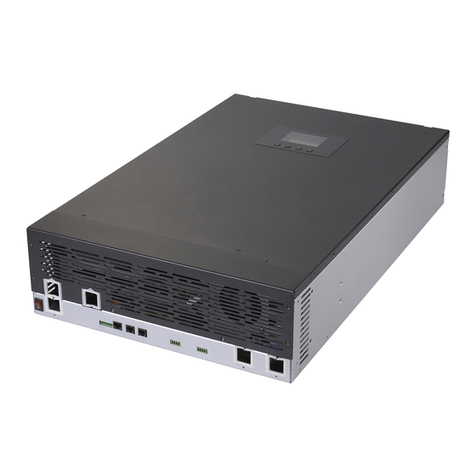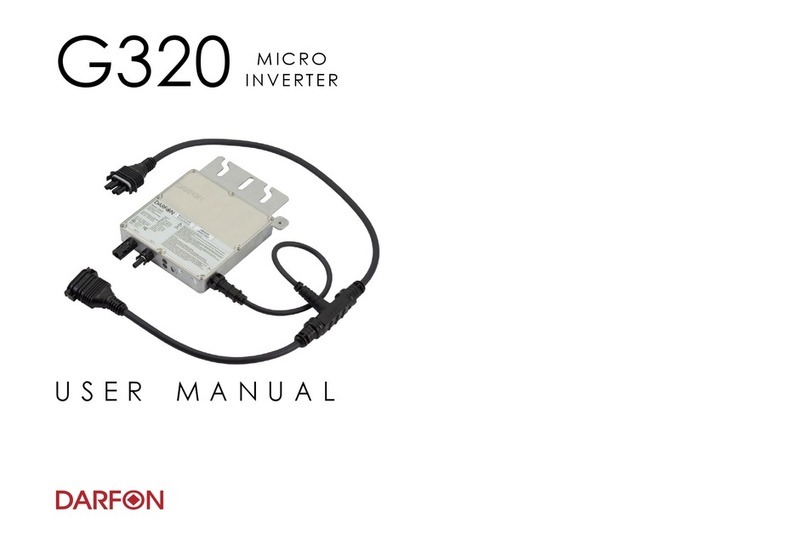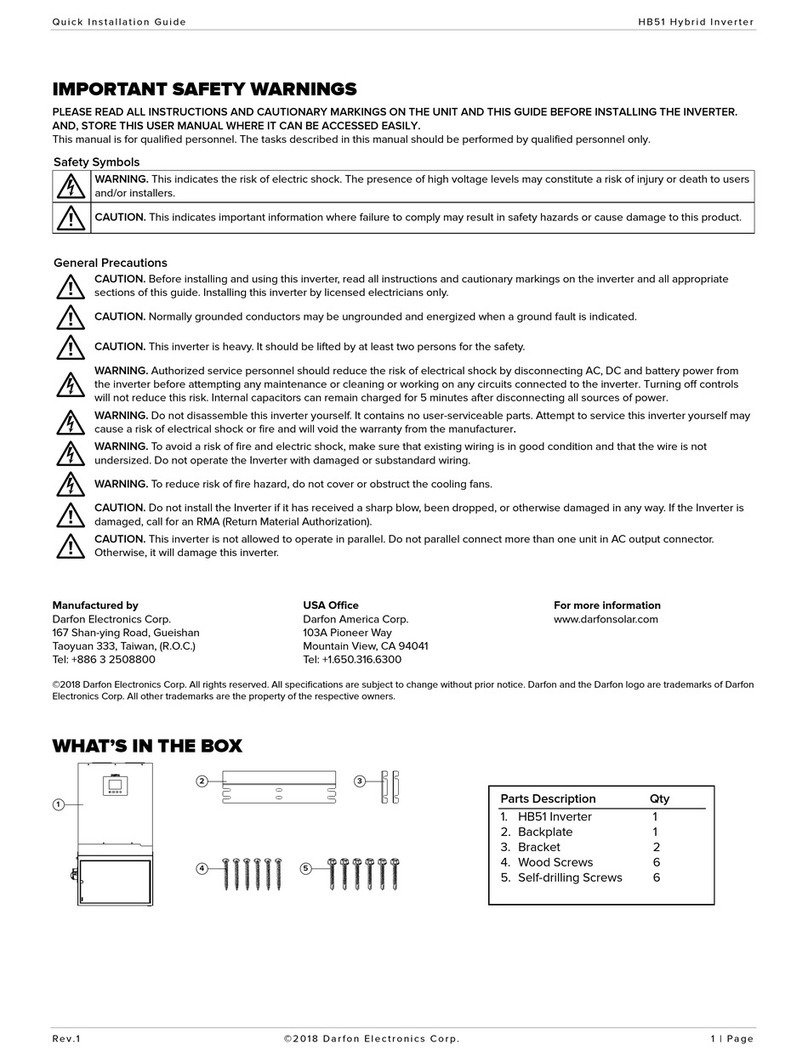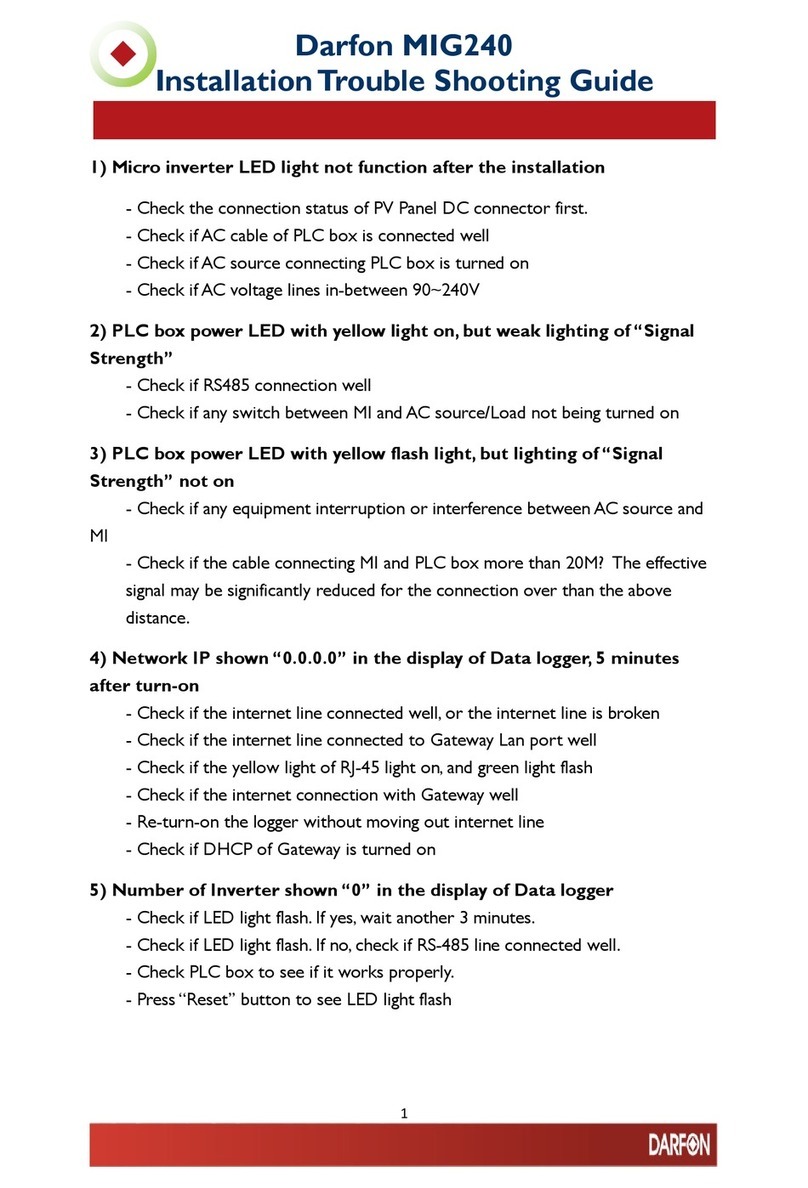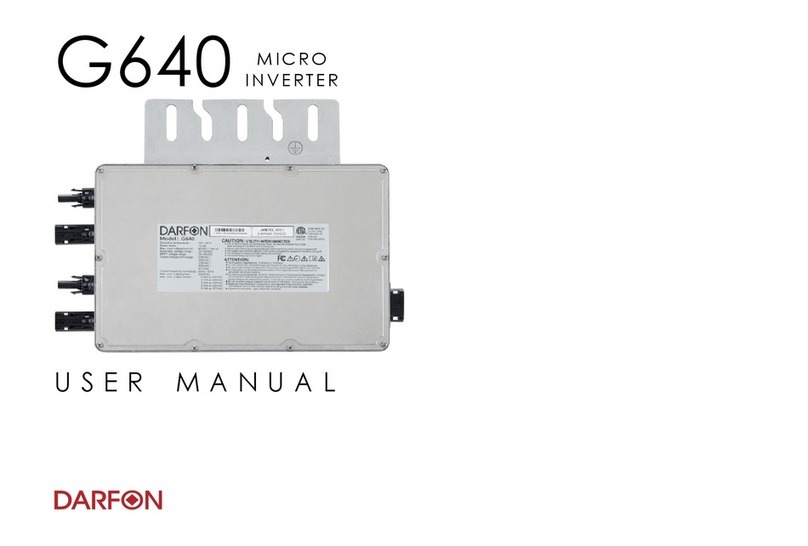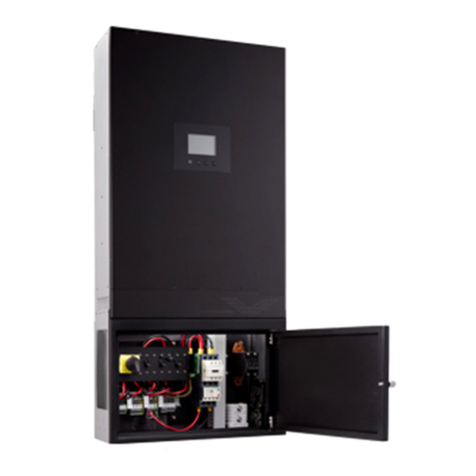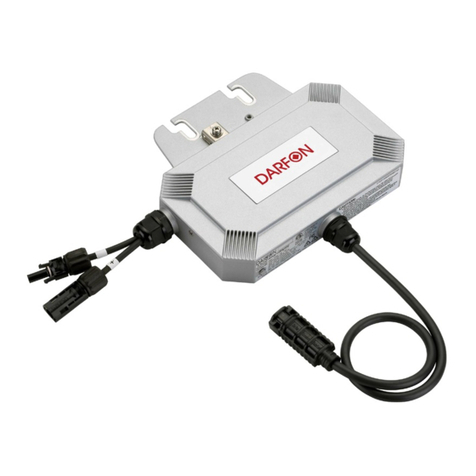
INSTALLATION MANUAL H5001 HYBRID INVERTER
REV.4 ©2022 DARFON ELECTRONICS CORP. 2| PAGE
TABLE OF CONTENTS
IMPORTANT SAFETY WARNINGS ..................................................................................................................... 3
WHAT’S IN THE BOX ............................................................................................................................................ 3
PRODUCT OVERVIEW .......................................................................................................................................... 4
Distribution Box........................................................................................................................................................4
Communication Ports.............................................................................................................................................4
Access Panel ............................................................................................................................................................4
Dead-Front Cover....................................................................................................................................................5
Mounting the Inverter.............................................................................................................................................5
OPERATIONAL MODES........................................................................................................................................ 6
SYSTEM DESIGN.....................................................................................................................................................7
Load Restrictions.....................................................................................................................................................7
Parallel Operation....................................................................................................................................................7
CONNECTIONS ...................................................................................................................................................... 8
System Types: Wiring Connection .....................................................................................................................8
Installing Conductors into the Terminal Blocks..............................................................................................8
Installing the Battery Conductors .......................................................................................................................8
Battery Charging Requirements..........................................................................................................................9
Communication Ports.............................................................................................................................................9
Access Panel ..........................................................................................................................................................10
TURNING THE SYSTEM ON/OFF .......................................................................................................................11
Turning On the System.........................................................................................................................................11
Turning Off the System.........................................................................................................................................11
OPERATION AND DISPLAY PANEL..................................................................................................................12
Display Overview...................................................................................................................................................12
Changing the Mode of Operation..................................................................................................................... 13
Setting the Battery Type......................................................................................................................................13
APPENDIX A: MAINTENANCE ...........................................................................................................................14
Cleaning ...................................................................................................................................................................14
Distribution Box Wiring Diagram.......................................................................................................................14
Error and Warning Definition..............................................................................................................................15
APPENDIX B: SPECIFICATIONS ........................................................................................................................ 17
APPENDIX C: CURRENT SENSOR [SOLD SEPARATELY] ............................................................................18
Wiring the Current Sensor ..................................................................................................................................18
APPENDIX D: EMERGENCY SHUTDOWN BUTTON [SOLD SEPARATELY].............................................19
Wiring the Emergency Shutdown Button to the Inverter...........................................................................19
Testing the Emergency Button.........................................................................................................................20
Resetting the Emergency Button.....................................................................................................................20
Troubleshooting....................................................................................................................................................20
